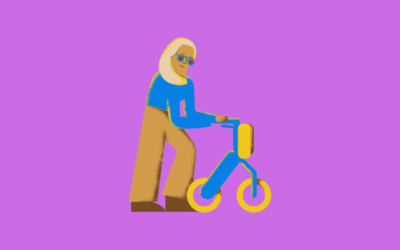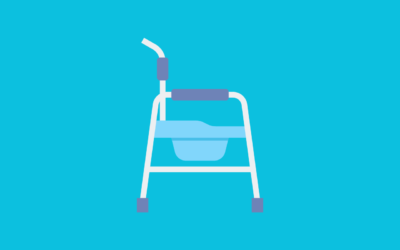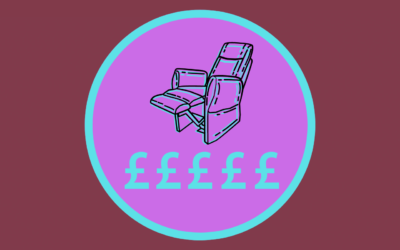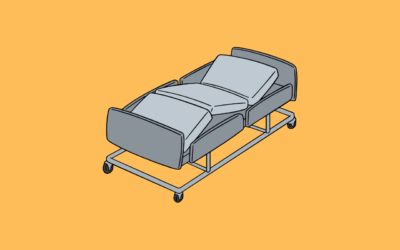Key Takeaways For Bedroom Mobility Aids
Tailored Mobility Solutions: Explore a variety of bedroom mobility aids, including bed rails, transfer boards, and overbed tables, to enhance comfort and accessibility.
Bed Mobility Exercises: Learn effective exercises like leg raises and knee-to-chest stretches to improve bed mobility and promote strength and flexibility.
Safe Lifting Practices: Ensure safety when assisting a bedridden person with transfers; gather necessary equipment, maintain eye contact, and seek professional guidance for secure lifting techniques.
Top Bedroom Mobility Aids
Here, you can find information about bedroom mobility aids. Mobility aids are a terrific investment in the quality of life and autonomy if you or a loved one are having trouble getting about.
Many kinds of mobility aids exist, each tailored to a particular set of difficulties. This article will provide an overview of the many bedroom mobility aids available and their features, advantages, and things to remember when making your final purchase.
This guide will help you find the right mobility assistance to match your requirements and enhance your everyday life, whether you’re searching for a bed rail, transfer board, or anything else.
What Equipment Can Aid Mobility In Bed?
Helpful bed movement aids are not restricted to the following items:
- The purpose of bed rails is to provide support when getting in and out of bed. They may go on either side of the bed, depending on personal preference.
- You may move patients from their beds to wheelchairs or other surfaces using transfer boards. Often made of wood or plastic, these tables have a smooth, uniform texture and solid structure, making transfers easier.
- An overbed table is a table that can be placed over the bed, allowing you to eat, work, or do other tasks without having to get out of bed. They may be adjusted in height and angle to suit the user’s needs.
- Electric beds‘ wider range of motion and a more tailored night’s sleep are benefits that you may adjust to the user’s preferences.
- You may place a bed wedge beneath the head or legs to alleviate pressure on aching muscles and joints and increase blood flow.
- Bed handles, which are attached to the side of the bed and help get in and out of bed, are a common safety feature in modern homes. You may also use them to facilitate the user switching sleeping positions.
What Exercises Can I Do To Improve My Bed Mobility?
Methods that you may utilise to make getting in and out of bed easier include:
- You may start the leg raise by lying on your back with your legs extended straight. Stretch one leg before you and maintain the position for a few seconds. Cross your legs in turn.
- Lie on your back with your legs straight to do a knee-to-chest stretch. The exercise involves bringing one leg to the chest and holding it there for a few seconds. Swap legs every so often.
- The bridge posture entails lying on one’s back with the knees bent and the feet flat on the bed. Hold this position for a few seconds with your legs elevated off the bed and your glutes squeezed.
- First, lie on your back with your legs fully extended. Kneel and tuck one heel under your buttocks; repeat on the other leg. Change your stance and begin again.
- Lay on your back with your feet flat on the bed. This apparatus is a leg press. When you need to get your hips off the bed, sit up for a few seconds while pressing down with your feet.
Suppose you want to have an easier time getting in and out of bed and moving about while in it; these exercises may assist you. The first step in any new workout plan should be a trip to the doctor.
How Do You Help Someone Bedridden To Walk?
A bedridden person often needs a combination of medical treatment, physical therapy, and rehabilitation to regain movement. Here are a few methods to consider.
- Consider the probability that the patient’s present incapacity results from or is at least exacerbated by a prior medical condition and treat that sickness appropriately. Treatment may include medication, surgery, or other methods.
- Do something to kick off the recovery process: Different therapies may be used in rehabilitation to help patients regain mobility, strength, and function. Possible components include strength exercises, balance and coordination practice, etc.
- As the individual’s strength and mobility improve, it is crucial to gradually increase their activity level to develop strength and endurance further. Standing and sitting alone, practising strolls while using a walker, and employing various mobility aids are all examples of what this may entail.
- Utilise current resources to Use a cane or walker, which can help a person who has trouble maintaining their balance go about more safely and confidently.
- You must maintain therapy and rehabilitation for the greatest outcome as long as the patient requires it. This may include when the patient cannot regain strength and mobility.
A patient who has been bedridden for an extended period should discuss options for getting back on their feet with their doctor, physical therapist, and rehabilitation specialist.
How Do You Lift A Bedridden Patient On The Bed?
It is important to employ safe lifting practices while helping a bedridden patient get up and down from the bed. Here are a few pointers on how to get a bedridden patient into a wheelchair:
- Think about the individual’s health and capacity. Consider the patient’s height, weight, mobility, and any ailments or diseases that could get in the way.
- Gather together everything you’ll need. You may need a gait belt, a transfer board, or some other kind of lifting equipment. Make sure everything you need is within reach before commencing the lift.
- Attempt to make eye contact with the sufferer. Be sure the patient understands and is on board with the proposed course of therapy. If the patient can do so safely, ask them to assist with the lift by shifting their weight or using their arms to push themselves up.
- Face the patient while standing hip-width apart, with one hand on the edge of the bed by the patient’s head.
- Hold the patient close: The patient may use a gait belt, your arms, or your underarms to assist them in walking.
- Turn around so that you are facing the bed while you lift the patient using your legs rather than your back. By keeping the patient close to your body, you can avoid straining your spine.
- Make sure the patient is comfortable in bed: As you lower the patient onto the bed, ensure they are well-supported and at ease.
Getting assistance from a healthcare expert or trained carer is essential if you need clarification on your ability to do the lift safely or if the patient’s size or mobility issues make it especially challenging.
What Can You Use To Help A Person To Get In Bed?
Different tools, such as:
- Bed rails provide support when getting in and out of bed. Depending on personal preference, they may be on either side of the bed.
- Transfer boards move someone from one level to another, from a chair to a bed. Often made of wood or plastic, these tables have a smooth, uniform surface and solid structure, making transfers easier.
- Electric beds’ wider range of motion and a more tailored night’s sleep are benefits that you may adjust to the user’s preferences.
- You may place a bed wedge beneath the head or legs to alleviate pressure on aching muscles and joints and increase blood flow.
- Bed handles, which are attached to the side of the bed and help get in and out of bed, are a common safety feature in modern homes. You may also use them to facilitate the user switching sleeping positions.
It is important to consider the individual’s needs and experience level when purchasing and utilising equipment safely. A healthcare practitioner or trained carer may be useful if the person has problems moving about or needs further support.
How Would You Ensure A Patient With Limited Mobility Is Safe While In Bed?
Some measures that you might take to protect a bedridden patient are as follows:
- Bed rails, bed handles, and transfer boards are assistive devices that might make getting in and out of bed and changing positions easier for certain people.
- The patient should have no difficulty getting in and out of bed.
- Making it hard for the patient to get out of bed increases the risk that they may fall and hurt themselves. Always maintain a clean bed and surrounding area.
- You may reduce pressure and stimulate blood flow by elevating the bed’s head or legs with a wedge.
- Using a mattress designed to distribute a patient’s weight evenly may help lower the patient’s chance of developing pressure ulcers.
- A gait belt might provide additional support when transferring a patient from bed to chair or chair to wheelchair.
Bed wedges, pressure-relieving mattresses, gait belts, and lowered bed heights may benefit patients with restricted mobility.
Top Bedroom Mobility Aids
Explore More Bedroom Mobility Aids and Accessibility Solutions
- Best Bedroom Mobility Aids – Discover mobility aids designed specifically for enhancing comfort and safety in the bedroom.
- Best Adjustable Beds – Learn about adjustable beds that provide personalized support and comfort for a restful night’s sleep.
- Best Bed Rails – Explore bed rails that offer safety and assistance when getting in and out of bed.
- Best Stand Assist Aids – Find stand assist aids that help with the safe transition from sitting to standing.












